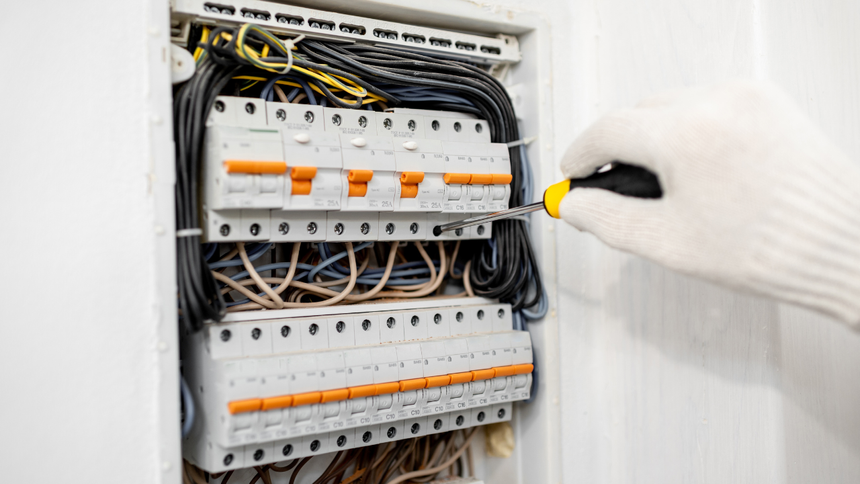The Electrical Safety Standards in the Private Rented Sector (England) Regulations 2020 have now been updated to ensure that the obligations apply to social landlords.
The Government published Guidance on 1 November 2025 to assist social landlords to navigate the changes. The Guidance can be found here: Electrical safety standards in the private and social rented sectors: guidance
The Electrical Safety Standards in the Private Rented Sector (England) (Amendment) (Extension to the Social Rented Sector) came into force on 1 November 2025 and will take effect for tenancies granted after 1 December 2025.
For tenancies that started before 1 December 2025, the regulations will come into force 1 May 2026, with all checks on electrical installations and equipment to be completed by 1 November 2026 by a qualified person.
The regulations apply to ‘residential premises’ that is, any property that includes all or part of a dwelling. If a tenant has a right to occupy a home as their own or main residence and pays rent for it, the property will most likely fall under these regulations. This can also include licences to occupy but there are some exclusions as listed in the guidance.
Landlords must ensure that:
- Electrical safety standards are met, as set out in the 18th Edition of the Wiring Regulations which are published as British Standard 7671.
- All inspections and tests must be carried out by qualified person
- Every property needs an Electrical Installation Condition Report (EICR) at least every five years. For social landlords, the report must also confirm that any electrical equipment they provide is safe and up to date
- They supply a copy of the report to an existing tenant within 28 days of the inspection
- They supply a copy of the report to new tenants before they move in
- They share it with the local council within five days if requested
- They keep a copy until the next inspection
If the EICR shows problems, landlords must complete repairs or investigations within 28 days (or sooner if specified). Once fixed, they must give written confirmation from the qualified person who carried out the repairs to both the tenant and the Local Authority within 28 days.
In terms of electrical installations to be inspected by a qualified person, this would include all the fixed electrical parts of a property – the permanent wiring and components that supply the power. This includes: wiring and socket outlets, light fittings, the fuse box, permanently connected equipment such as showers and extractor fans. The qualified person will be checking that electrical installations are not overloaded, there is no risk of electric shock or fire hazards, that there is no defective electrical work present or a lack of earthing or bonding.
In addition to the requirements set out above, if electrical equipment such as white goods are provided as part of a tenancy agreement, social landlords must carry out several other key steps to ensure the electrical equipment provided remains compliant:
- Regular checks and inspections – all electrical equipment provided as part of the tenancy must undergo visual inspection/testing, by a qualified person
- Five-year testing cycle – electrical equipment must be tested at least once every five years
- Keep proper records – after each inspection, the qualified person will provide an In-Service Inspection and Testing of Electrical Equipment (ISIT) record
- Act quickly on unsafe equipment – if any equipment is found unsafe, tenants must be informed immediately, and it must either be repaired or replaced as soon as possible and no later than 28 days after the check
- Share the records – landlords must supply copies of the ISIT record to existing tenants within 28 days of a written request, to new tenants before they move in, to prospective tenants within 28 days of a written request or to the local council within 5 days of their request
- Keep records safe – retain a copy of the inspection record until the next check is due
Social landlords will not be responsible for checking the tenant's own electrical equipment.
If remedial work on electrical installations or equipment is identified then landlords must complete remedial works promptly - ensuring work is completed within 28 days or sooner if required. If an inspection identifies urgent electrical hazards and the landlord hasn’t rectified them within the timeframe given, the Local Authority can step in. With the tenant’s consent, the council may arrange the remedial works themselves. Local Authorities can impose a financial penalty of up to £40,000 on landlords who are in breach of specified duties under the regulations, and it is crucial that landlords remain compliant to avoid such penalties.
If you have any questions, please contact Hana Rashid, Emilie Pownall or Anna Bennett.

/Passle/6491ca5e863f054b458578e8/MediaLibrary/Images/2025-10-10-09-31-53-615-68e8d289395c65df95ab4a24.png)
/Passle/6491ca5e863f054b458578e8/SearchServiceImages/2025-12-16-09-59-58-173-69412d9e5657195f59051a65.jpg)
/Passle/6491ca5e863f054b458578e8/SearchServiceImages/2025-12-16-09-14-10-370-694122e2bb3bd235d3e8ee10.jpg)
/Passle/6491ca5e863f054b458578e8/MediaLibrary/Images/2025-12-12-09-20-42-437-693bde6a59393de316130c1d.jpg)